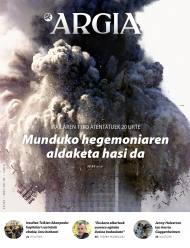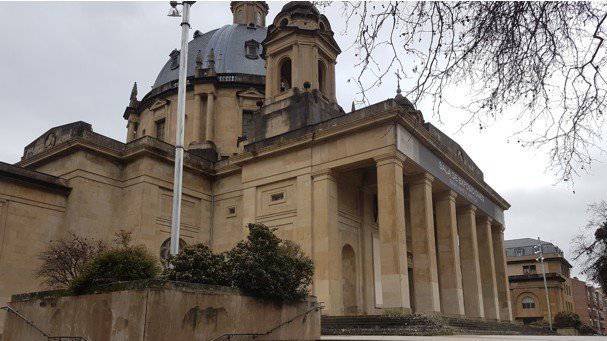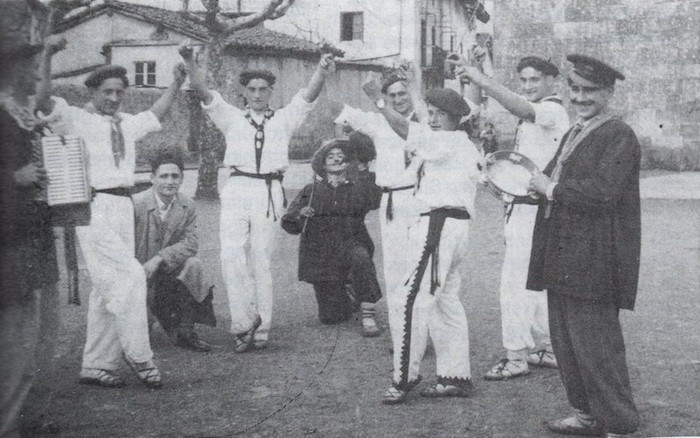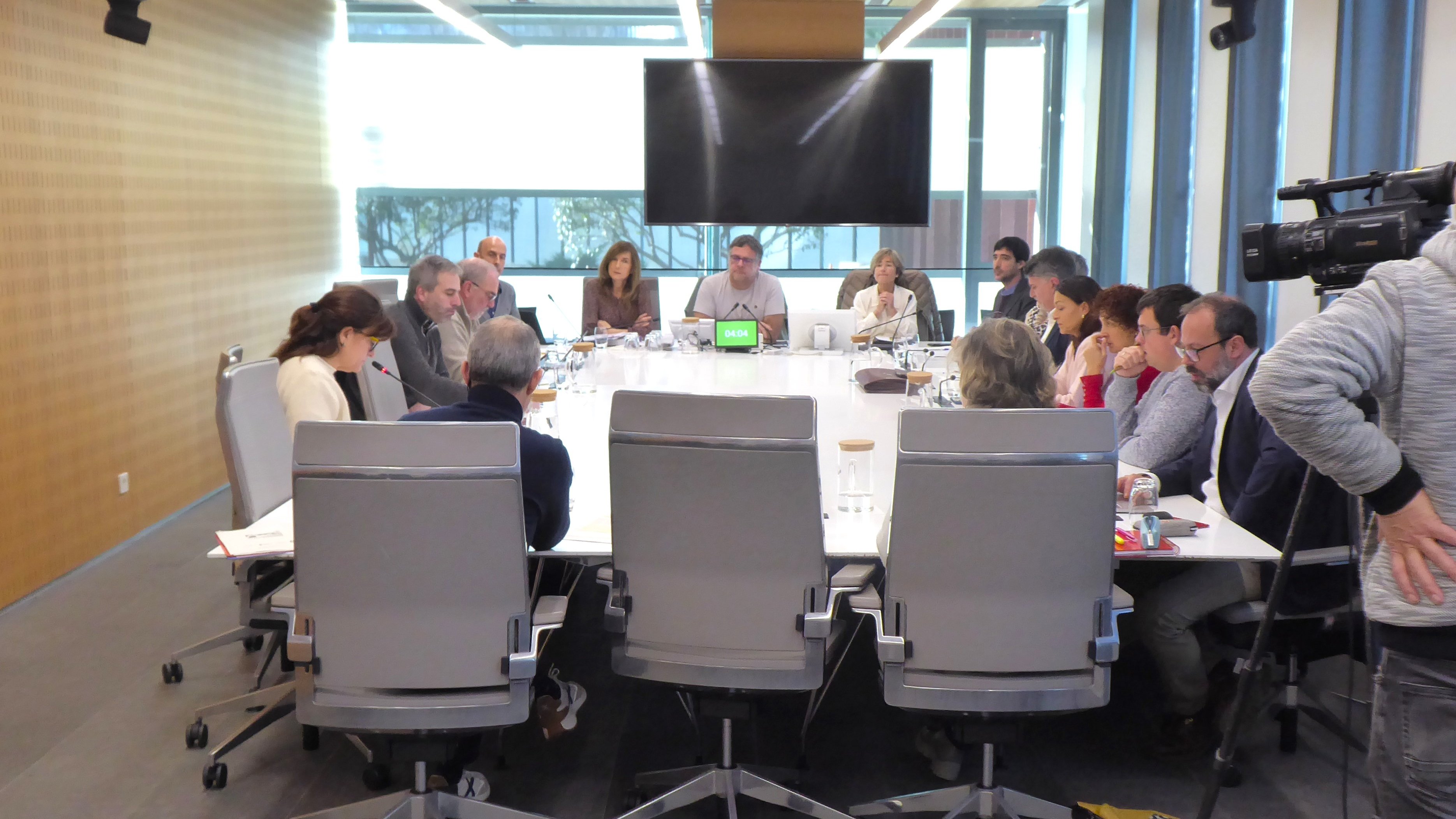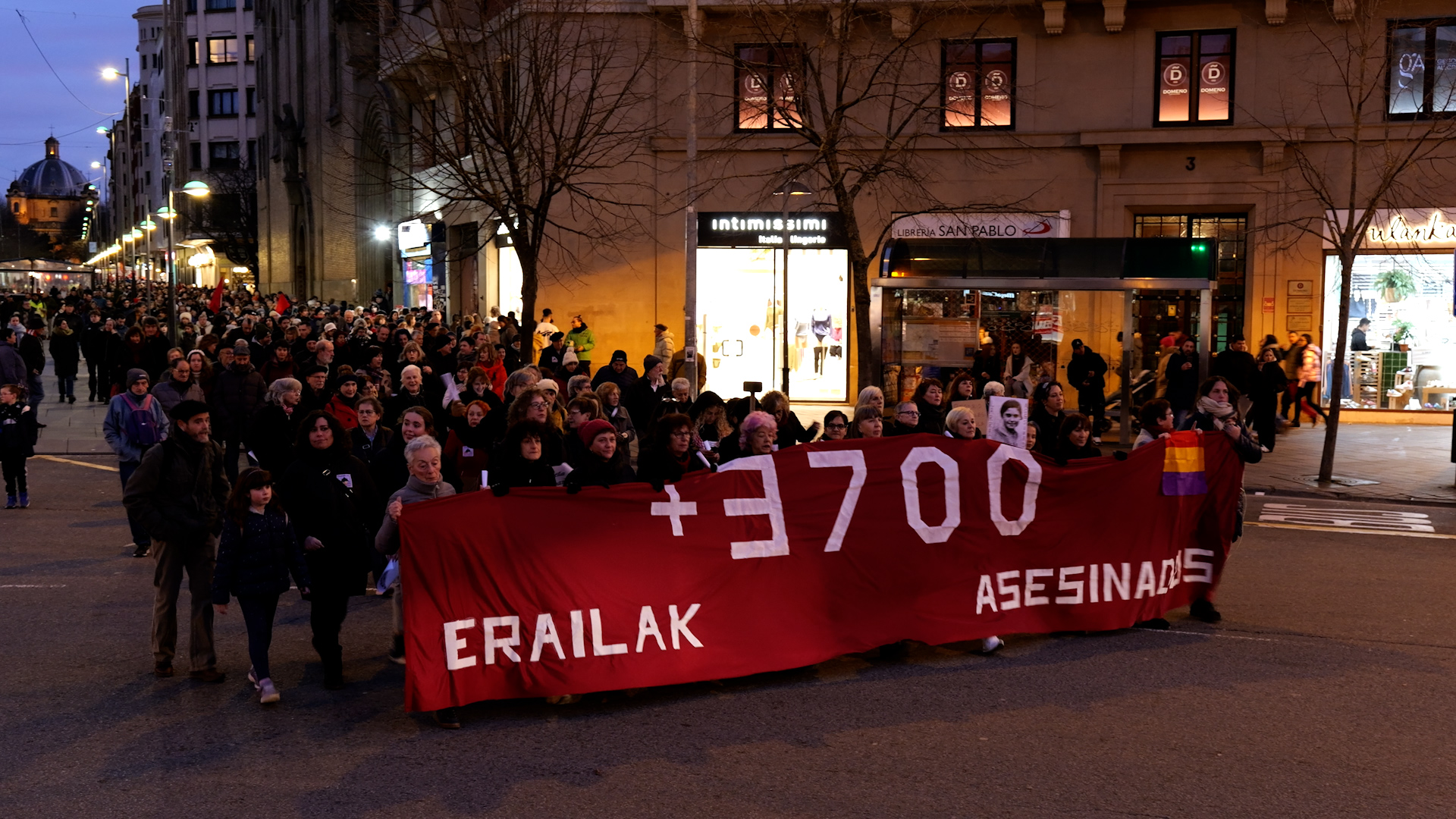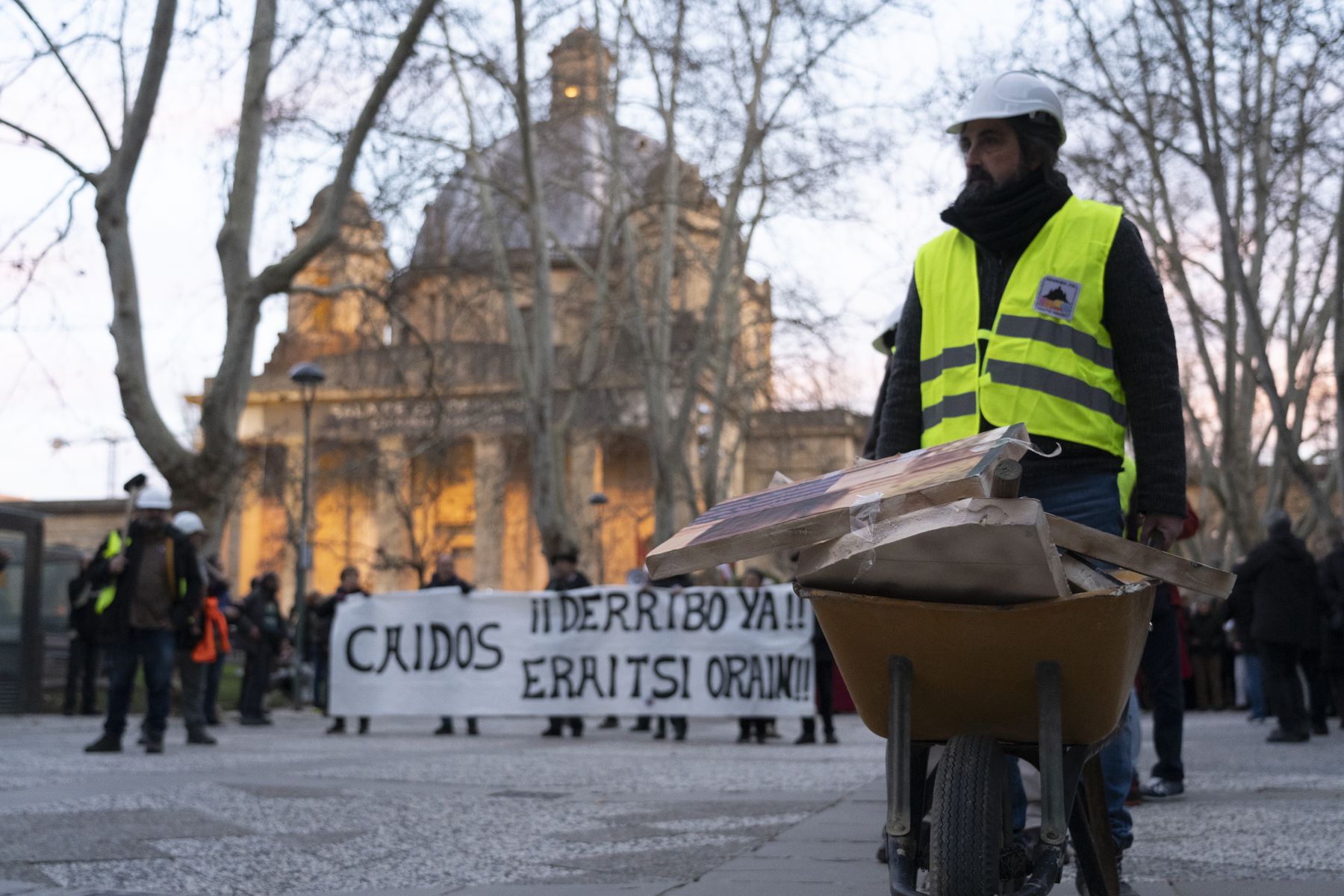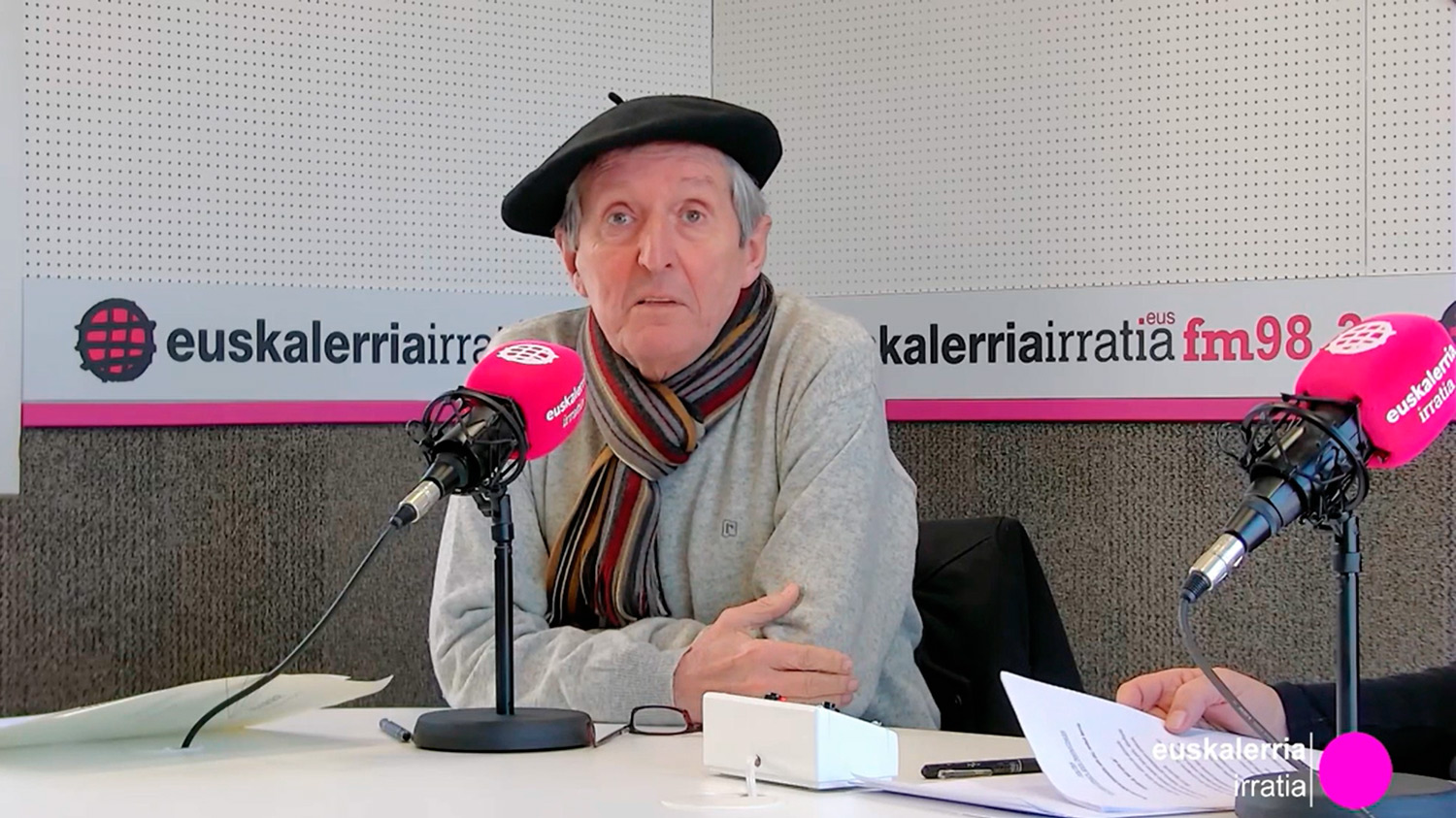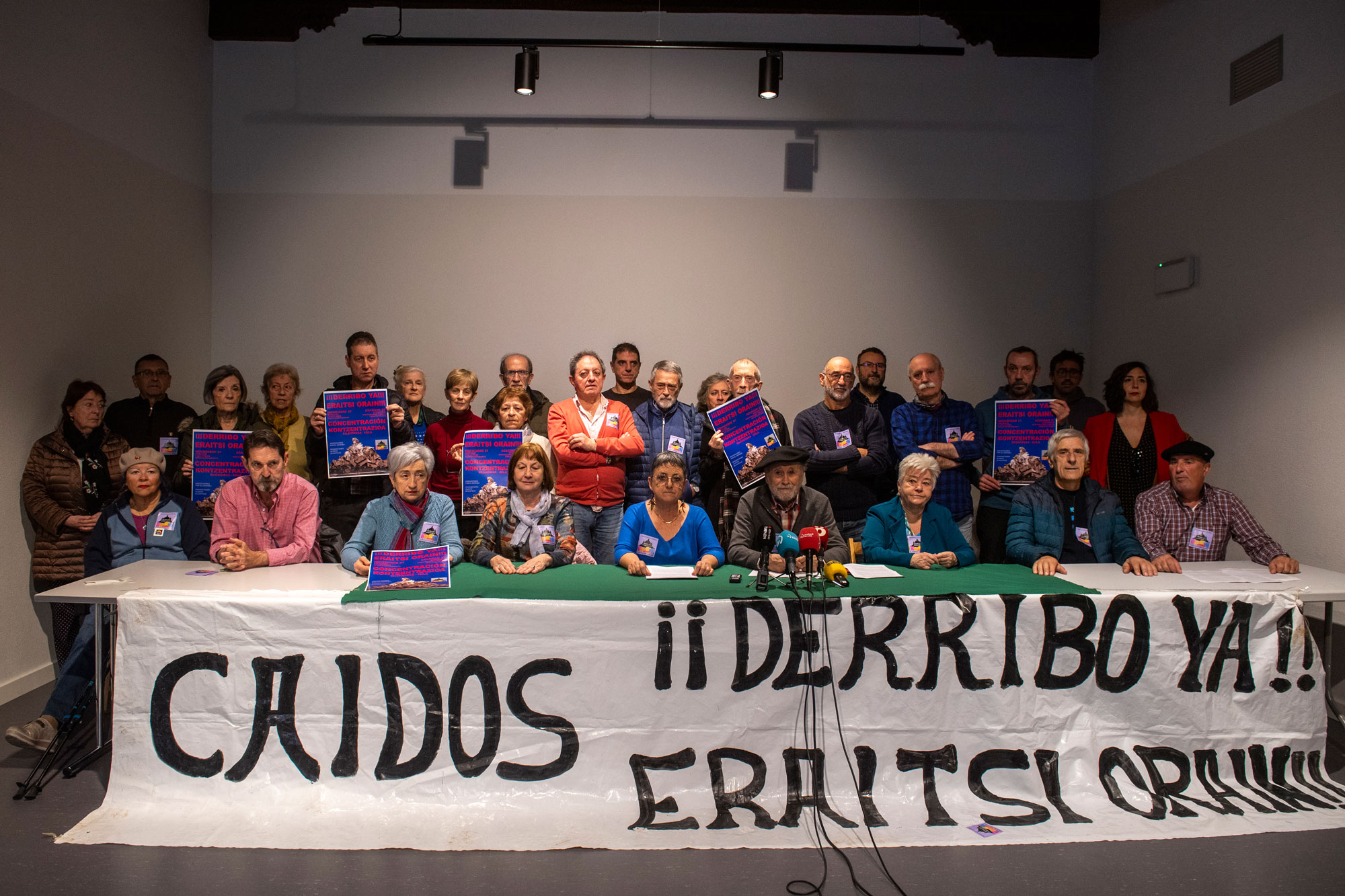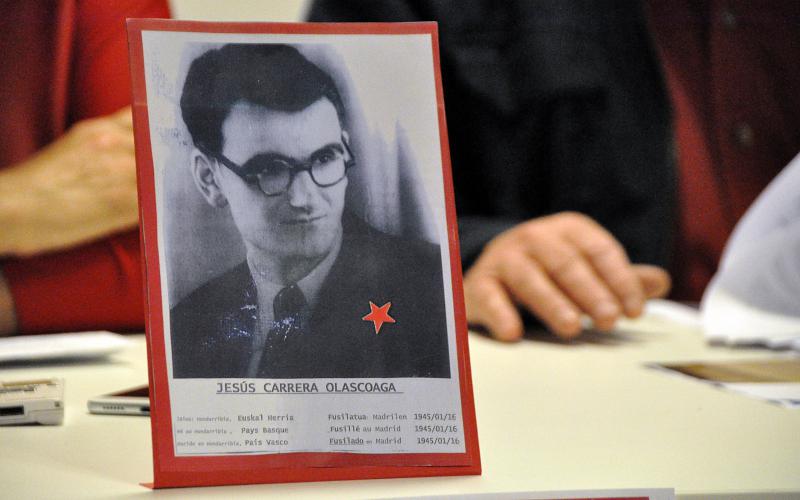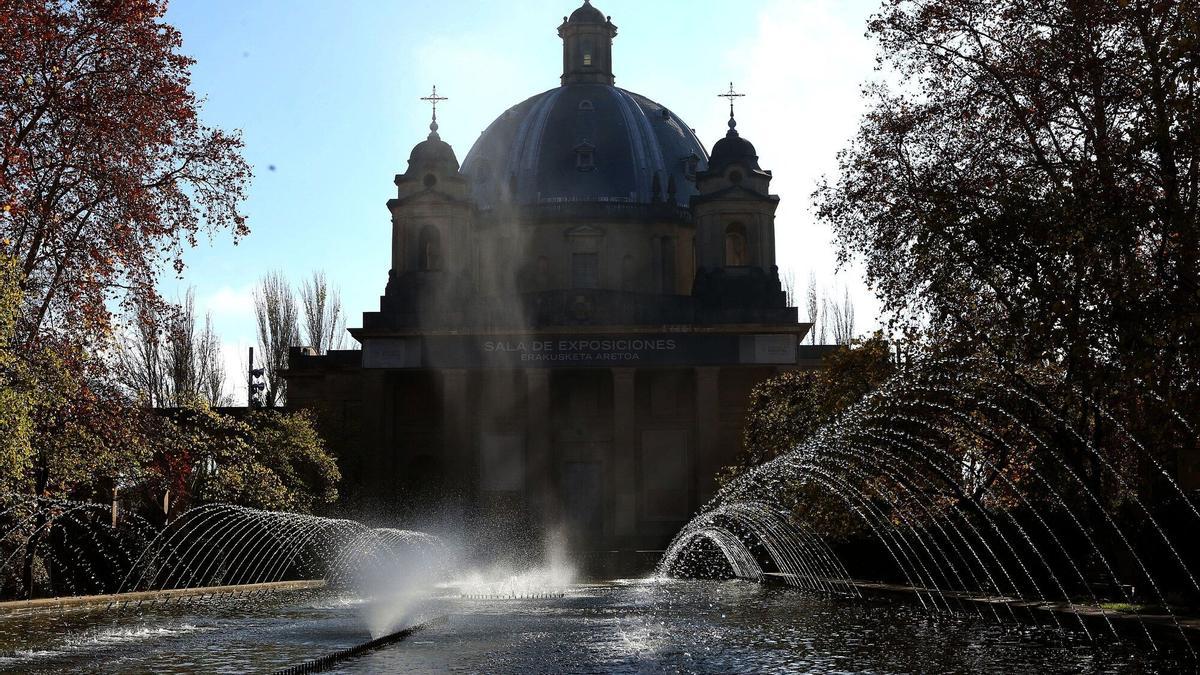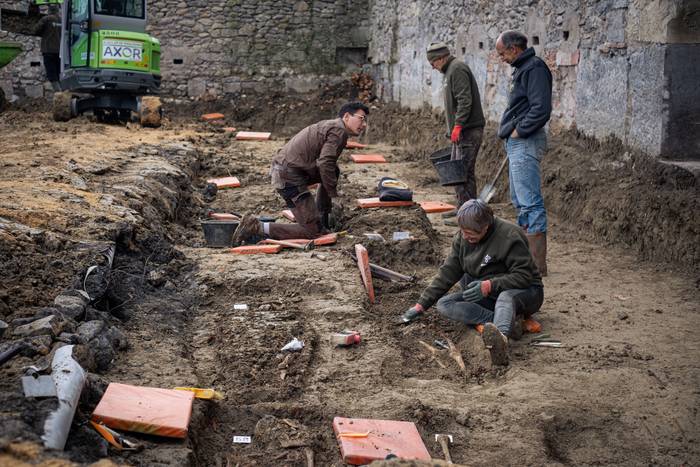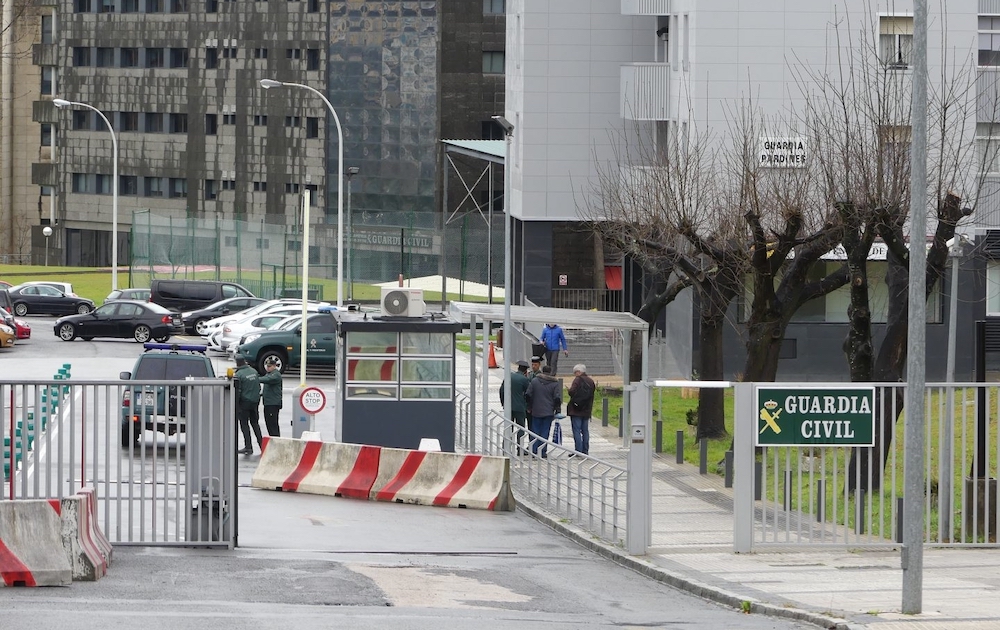“Bishop Argaia ‘lost’ the photos of our torture”
- Juan Mari Zulaika is nervous and has been nervous. He was a Franciscan friar, working priest, prisoner of Zamora, member of ETA, member of the association of neighbors, militant and entrepreneur… The recent priestly prison movie has opened the door to talk to him.

Teologia ikasketak egina, frantziskotarra, apaiz langileetakoa izan zen, atxilotu eta torturatua, Zamorako kartzelan preso… Irakasle, kontulari, informatika saltzaile eta programatzaile irabazi du ogia. Goldatu Memoriazale Elkarteko kide da, Argentinako kereilan parte du eta, are, beste hainbatek bere testigantza eman dezan lan egin du, eraginez. Hiru liburutan sakabanaturik dira bere bizi eskarmentuari dagozkionak: Zamorako apaiz-kartzela. Eliza eta estatuaren presondegia (1968-1976), Apaizak ere torturatuak, eta Bizitza bi aurrez aurre. Arantzazu, Kuba, Bilbo, New York. Oraindik orain, berriz, Apaiz-kartzela dokumentalean ikusi dugu.
You are a Franciscan… The
decision of my life, which I did not reach the age of ten! In 1942 he was born in Zarautz and was in Arantzazu without turning ten. Surely attracted by the charm of an unknown place. On the other hand, being the smallest of ten brothers and rebels, I also went to the friars to flee from the narrow discipline of the house. Even if it sounds like a lie, in Arantzazu I almost lost Euskera, because there it was used so little. Kepa Enbeitia acknowledged that. The destruction of Euskera and culture was very serious.
Apparently, at Olite became aware of the politics...
Yes. After studying in Forua and Zarautz, we went to Olite learning philosophy. There I woke up to politics. We read La Quincena, coming from Cuba, Sierra Maestra, revolution, Fidel Castro, Che Guevara… We became passionate Castrists. On the other hand, we once met a gentleman from Tafalla, Doxandabaratz, who had been a warrior. We talked a lot about war and politics, between the tilos of the Zidakos River. It also made available to us clandestine pages, Irrintzi, of Caracasética or of origin. Doxandabaratz raised in us an intense awareness of the dictatorship and of Franco. In my case, passion for politics. We also started working for Basque in Olite, seriously! There I read the first poetry of Joxe Azurmendi.
And back to Arantzazu, to study theology.
It was in 1961. Nine years earlier the apostles of Oteiza continued on the edges of the roads. And they stayed there until 1969. The following year the competition was opened for the realization of the apse. For two years we had Lucio Muñoz working on this wonderful work. Little by little the new shrine was built, and around it began the great works: the new giant seminary, the pediment, the large plaza... A group of workers, some fifty, met. Most of them were farmers in the Spanish state, cheap seasonal workers. They were placed in shameful barracks. I started going to them until I created close relationships. We spent hours together, chatting, eating, drinking – sometimes a strong Galician caterer – going to the bar… We told our superiors that we were working together. In this sense, the dream of some was to create priests and fraternal workers; to begin with, mine. Convents were far from the town, and we believed that the best way to preach Franciscan poverty was to gain daily bread with their own sweat. We believe that there was no better way to channel the gospel than to live with the workers.
You made a great friendship with Miguel Angel Loredo, Cuban.
He studied theology, along with several Latin Americans. We became good friends. I immediately invite myself to meet with the workers. Despite belonging to the bourgeois family in Havana, he was satisfied. We agreed on a lot of things. It was a time of debate, everything was boiling. The Cuban revolution, the abstract art of the new Arantzazu, the biblical theology of studies versus the old scholastic. Flowering was skilled in both theology and art. On the other hand, the famous Father Goitia taught us that the Bible should leave the narrow Corinthians until then and should be interpreted more freely. He had just come from Israel...
.jpg)
Dear friends you, but each one had to follow his path. You did it to Bilbao. He, to Cuba.
Yeah, that too. Tell me mass in front of the workers and went to Cuba a month, to the communist Cuba of Fidel Castro! I had a year left for the priest, and in the meantime I continued to walk with the workers of the barracks, with the intention of one day forming a friar worker, a brother. The case is that Michelangelo came to Havana and saw them closed. However, it was linked to the apostolate. He did a great job. Catechesis of one, parish life of another, conferences and new lithologies and theologies... He did his job successfully. The regime’s leaders decided to cut Loredo’s wings. It didn't last a year or a half. A friend was infiltrated, there was an assembly, and they finally had 9 years and 8 months in prison in the toughest prisons on the island, until 1976.
"The comparison of prison policies between Cuba and Spain led me to the catharsis, to the point that the errors of castrism were not missing"
There is parallelism between Loredo and your road...
Yes. We both left Arantzazu, me to Bilbao, to Havana. Soon, we were both incarcerated. He in Cuba, I in Zamora. We both received ill-treatment and torture. I was a victim of Franco's dictatorship. She, from the regime of Fidel Castro. Subsequently, he appeared on several occasions as spokesman for the Cuban prisoners in the European Commission on Human Rights to denounce the violation of their rights. I, on the other hand, have acted in the same way in Goldun, in the UN committees and in the MEPs' meetings, but to denounce the injustices of Franco. There's the parallelism of two people. That, and the comparison of prison policies between Cuba and Spain, led me to the catharsis, to the extent that the errors of castrism did not seem.
He was twice in Euskal Herria.
He came for the first time in 1984. I was going to Rome and we had it here. We ideologically distanced ourselves from each other, we were away from extreme positions, but we kept the coals of old friendship. He was in Puerto Rico for several years, and the last one definitely lived in New York. And from there it came in 2006. The two friendly, but not as much as the first encounter. We were in Bilbao, in the Guggenheim and Fine Arts museums, which was also a painter, and of course in Arantzazu. He, put himself in the ministry of the church, and I got to the other side. I'm the victim of Franco, because of castrism. She, victim of Castro, against castrism. On Christmas 2012, I found out that he died. His death hurt me. But by then I was writing a book, which I had advanced, in which I paid the debt to my friend Loredo.
Speaking of Loredo, he tells us he was a prisoner in Zamora…
Yes. I made the way… They ordered me a priest and sent me to the Iralabarri of Bilbao. So we created the neighborhood partnership. I made friends to many workers and trade union activists. I connected with several of the former HOAC (Brotherhood of Catholic Action Workers). But I had problems with my bosses and I was taken from the responsibility of the youth, even the small parish of Iturrigorri, to speak to the women of the contraceptive pill. In 1966, on the 30th anniversary of the dictatorship, Franco called a referendum. On that day, together with many priests here, I called for abstention in the sermon of Mass Major. The rector punished me and left me without eating. My boss, who is a priest, told me to leave where he wanted. I had another friend, Felipe Izagirre, who was friar at Bermeo, who was as burned as I was. I called him and proposed to go to Eibar, and there we created a fraternal worker, for the workers and against the dictatorship. We were on the front line! It was already a crisis, and all the factories and workshops between Elgoibar and Ermua were looking for work. I found work in an old foundry and Felipe in another workshop, milling machine.
June 1968. Txabi Etxebarrieta. The murder of
Txabi Etxebarrieta, the funeral and the demonstration. And before the demonstration began, two secret policemen caught Felipe [Izagirre] and I, entering a tatarrando portal, beating us in the head and letting us bleed. When we went home the champions came to us, they took us to the barracks and they kept us all night with head blows and kicks, mercilessly. It was a dozen, hitting us. They were very angry at the cost of an open sheet on the street. Your hatred! From the waist to the ankles, they left us all amorphous. We also took photographs to witness torture and handed them over to lawyers Juan Mari Bandres and Miguel Castells. They were handed over to then Bishop Jazinto Argaia to observe what was happening. Then, when they went to look for a photo, the bishop told them that he had “lost” our photos, that of torture. That is the case!
"In the Netherlands they hardly understood our situation, how could priests be judged in military barracks and imprisoned?"
Did the priest of Zamora take you to prison?
Yes, but not immediately. In Eibar, the day after being beaten at the civilian guard's headquarters, they took us to Martutene. In June, we got twice there, the days. The indictment was “Bandits and Terrorism.” But we were priests, and they couldn't have us in jail anyway. Another priest, Alberto Gabikagojeaskoa, was held in the convent of Dueñas, or closed, but people visited him. Solidarity was immense. Meanwhile, we in Martutene, and a long list of rebel priests awaits us! And they created the Concordato prison, the Zamora prison, the priestly prison, the only one in the world. We entered Zamora on July 22, 1968, where Alberto Gabikagojeaskoa was from the day before. We were brand new. Franco's dictatorship kept 54 priests imprisoned there. 43 of them Basques. The latter was released in 1976.
How long he was in prison in Zamora… I
made three stays in nine months. It was 1968, second in 1969, and third in 1970. The first two for default and penalty. In the third stage, we were given a military trial at the Chamber of Arms of the Loyola Military Headquarters. It was the soldier who presided over the table, for his innumerable medals! Accusation, that we participate in that demonstration by Txabi Etxebarrieta. The prosecutor asked for three years in jail, but at six months our lawyers, Bandrés and Castells managed to get down. I was eight months old in Zamora and I was free in September 1970. Some also turned eight!
He also informed me of his situation abroad… Once I left
Zamora, I was in the Netherlands participating in the assembly of “accountant priests”, the priest met us with several friends of the Indarra group. I acted on behalf of the prisoners of Zamora, in the situation of the priests, in the situation of the prison, in the behavior of the dictatorship… There they hardly understood our situation, how the priests could be judged in the military barracks and put themselves in jail. They knew Franco, but they did not apparently know that the Church was attached to the dictator. However, there was a difference between those priests and us. I said, “You are fighting celibacy. We, for fundamental human rights, for the freedom of the people, against torture.” '97; Applause!
After Zamora did you have the way to live like you?
After the first arrest, the police expelled us from Eibar. Then, soon after going to Bilbao, we formed a new brother of three friars in the Errekaldebiri neighborhood. We worked, we rented a home and we started to live there. We were in close relationship with the members of the neighbourhood and trade union association. In the afternoon, I started studying Sociology at the University of Deusto. In my last stay in jail, I had to do fourth-year exams, but the director of the jail didn't leave me. And I didn't finish the studies, because then I couldn't move on.
.jpg)
He once ceased to be a Franciscan.
Yes. In Errekaldebiri we moved in elementary Christian communities, we gave masses outside the official Church, in nobody's house. I also made some weddings this way. A couple of years later, as religious discrepancies had only increased, I left fraternity in a good deal. Even though I've said it before, it's not true that the belief is that the snow melted like with the south wind. That gave me jobs. In Zamora, I was able to make some readings, for example, about liberation theology. There was a book, The Death of God, of a Protestant theologian, that revolutionized my interior. Left-wing ideologies also dominated society and secularization was total. I stopped being a priest, and I had to work.
"When ETA split into two, in the debate of whether armed struggle or mass struggle should be prioritized, I stayed with the supporters of the mass struggle, in the Revolutionary Communist League"
And since then, what was his life like?
For a year, I was a professor at Algorta's ikastola. He was already a member of ETA. One day I got a call from lawyer José Antonio Etxebarrieta, who had a complaint and the police were chasing. And I had to hide. I lost the job I liked. I couldn't go abroad. I spent a few months in secret, in secrecy, living in the homes of my friends and working with the militancy, doing what the organization entrusted to me. When ETA split into two, in the debate about whether armed struggle or mass struggle should be prioritised, I stayed with the supporters of the mass struggle, in the Revolutionary Communist League. In the first municipal elections, I was put at the top of the list in Bilbao.
You are the guardian and agent of historical memory.
Look, it's a passage, but they keep it very quiet. In 2003, under the chairmanship of Ibarretxe, a decree was passed to recover the historical memory. Ibarretxe took advantage of an act at the Euskalduna Palace to announce it. I mean, he didn't give a normal press conference. So we created the association “Geureak, the victims of 1936” and started working on the historical memory. We were the first. The team was to recognize the victims of the Franco War and raise funds. Zarauztarra Arantxa Zabalegi, for example, did a great job of helping many families in their processing. If I retired, I went back to Irala's neighborhood association, even if I didn't live in the neighborhood. For example, I tried to create a platform for the fourth subway line. Moreover, I have always been deeply involved in politics: Ezker Gogoa, the federation of neighbourhood associations in Bilbao, the Social Forum… In one way or another, we are always fighting.
* * * * * * * * * * * * *
MEMORY AGENT
“I’ve worked mostly as a memory agent. In January 2012, a hundred former prisoners here met and founded the Goldar Association and participated in the Argentinean lawsuit. More than a hundred petitions have been sent to Judge María Servini. The aim is to denounce Franco's regime and Franco's impunity, to amend the 1977 Amnesty Act. We have not managed to prosecute Martín Villa and the torturers, but we have broadened consciousness and have involved public institutions in part.”
LAST WORD
“This prison
has always aroused great interest. After several articles, interviews and reports, Maluta Films has made a documentary: Prison of priests. It was presented in April at the San Sebastian Film and Human Rights Festival. In autumn they will start to broadcast in festivals and televisions, in our cities and towns, in Catalonia and in the Spanish state. Thank you work. The silent stories of prisons deserve such recognition.”
Tafallan, nekazal giroko etxe batean sortu zen 1951. urtean. “Neolitikoan bezala bizi ginen, animaliez eta soroez inguratuta”. Nerabe zelarik, 'Luzuriaga’ lantegian hasi zen lanean. Bertan, hogei urtez aritu zen. Lantegian ekintzaile sindikala izan zen;... [+]
Eraispenaren aldeko elkarteek manifestazioa antolatu dute larunbatean Iruñean. Irrintzi Plazan manifestazioaren deitzailea den Koldo Amatriarekin hitz egin dugu.









